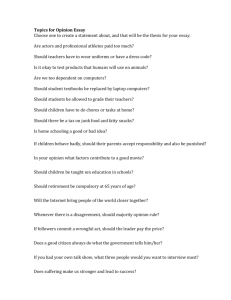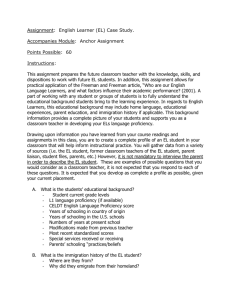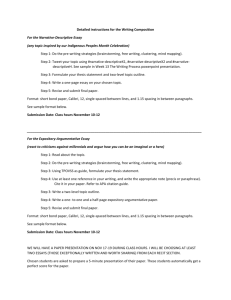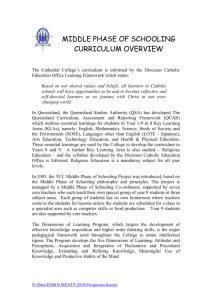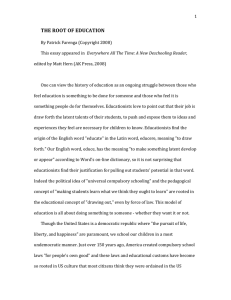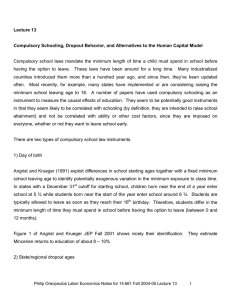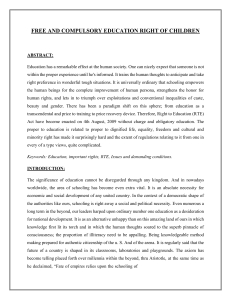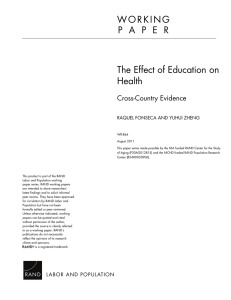Lecture Slides: Education and Information Literacy
advertisement
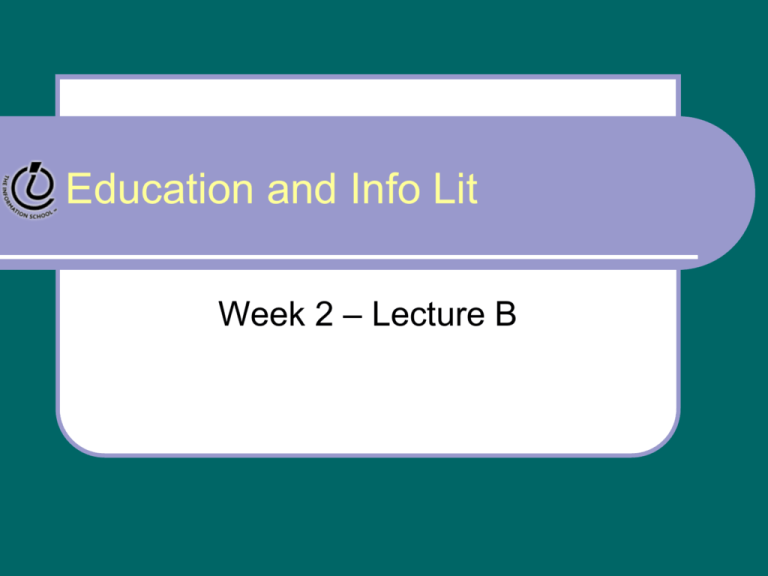
Education and Info Lit Week 2 – Lecture B Why are we having this conversation? Current Conditions Emerging Challenges and Opportunities Social and Historical Influences People and their Lives John Bransford Where Does Learning Happen? The LIFE Center Historical Trends in Education (See Amirault & Branson – Educators and Expertise: A Brief History of Theories and Models) Ancient and Medieval Individualized / small group instruction Education for the few Instructor as subject matter expert Informal or oral assessment Modern Mass education Education for the many Instructor as expert in educational techniques Formal, objective, and measurable assessment And Post-Modern?? Development of American Schooling (See Collins and Halverson, Rethinking Education in the Age of Technology. For alternate views, see Tyack’s Ways of seeing: an essay on the history of compulsory schooling) Invention of the Printing Press Immutable mobiles Reformation Primacy of individually acquired knowledge 1642 Massachusetts law Massachusetts Act of 1647 American Revolution Enlightenment Voting rights Citizens who understand and able to defend their rights Development of American Schooling (See Collins and Halverson, Rethinking Education in the Age of Technology. For alternate views, see Tyack’s Ways of seeing: an essay on the history of compulsory schooling) Industrial Revolution Arrival of immigrants Need for social cohesion Path to security/success State-provided schools Parental assumption - learning generally happens in the classroom The School System Compulsory attendance Graded schools Tests Textbooks “Carnegie units” Comprehensive high schools From Melting Pot to Mixed Salad 1820 – 1920 was high urbanization 1836 – 1914 large immigration from southern and eastern Europe Urbanization and immigration leads to compulsory education and schooling as a system 2000 – 2005 large wave of immigration from Asia and Latin American What does this all mean for learning today? Development of American Schooling (See Collins and Halverson, Rethinking Education in the Age of Technology. For alternate views, see Tyack’s Ways of seeing: an essay on the history of compulsory schooling) “The elements of the new design of schooling evolved together into a coherent system to meet the demands of a democratic and growing society. But as the system became more rigid, it ceased to evolve as the society around it continued to evolve, and so in recent years, it has become more and more out of sync with the demands of a continually evolving society.” So what kind of system do we need today? Why information literacy in libraries? Higher Education Entering the discipline’s conversation Expectation of student’s abilities Public Libraries Developed to educate the masses (similar time frame to K-12) Public access computers K - 12 1983 - A Nation at Risk 1991 - Secretary's Commission on Achieving Necessary Skills (SCANS) Business Settings Workers’ use of technology Basically, because they’ve had to! Next week – Models and Standards
